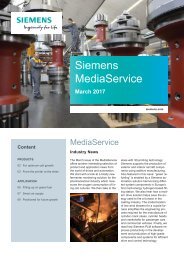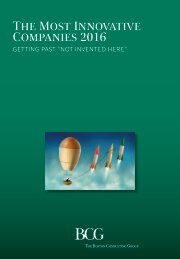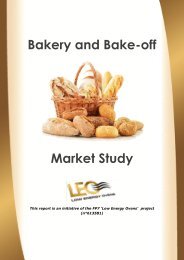Success Stories
VEZSJ
VEZSJ
Create successful ePaper yourself
Turn your PDF publications into a flip-book with our unique Google optimized e-Paper software.
Internet of Things <strong>Success</strong> <strong>Stories</strong> Series #3<br />
CESENS, a comprehensive system for agriculture intelligence<br />
1. Problem<br />
The agricultural sector is one of the most traditional activities where technology has penetrated with<br />
less intensity. Other than agricultural machinery and plant protection products, agriculture today<br />
is very similar to that practiced for thousands of years and in many cases decisions are still made<br />
looking at the sky.<br />
It is increasingly common that field technicians (agronomists)<br />
give advice based on meteorological data recorded by public<br />
stations. Although there is a substantial improvement in the<br />
process when basing a decision on such data, there is a problem<br />
of imprecision derived from the distance to the nearest<br />
public station of each plantation.<br />
The specificities of topography, plant canopy or even human<br />
works in each plot are determining factors in setting the climatic<br />
conditions in small areas. For example, a small hill<br />
can make differences in the level of rainfall, wind speed and<br />
temperature in plantations less than one kilometre apart.<br />
This means that the data recorded by a public station are not<br />
always representative of the whole area which is supposed to<br />
be covered. In addition, sometimes the required information is<br />
not available for an area or is really difficult to process it since<br />
complex models need to be used.<br />
Due of the mentioned methods and limitations, farmers have<br />
to face consequences such as water waste or deficiency,<br />
wrong timing treatments, lower crop quality, higher field<br />
contamination and also higher costs.<br />
On the other hand, the current growth trend of agricultural production<br />
is unsustainable because of the negative impacts it<br />
causes on natural resources and the environment. One of the<br />
key points in making progress towards sustainable agriculture<br />
is to improve efficiency in the use of resources, such as<br />
water and others (FAO, 2015).<br />
Irrigation systems have been under pressure to produce more<br />
with lower supplies of water. As world population grows and<br />
global food production increases to meet the demand, water<br />
management in agriculture, which accounts for approximately<br />
70% of all water use, is becoming one of the key collective<br />
challenges to achieving sustainable development worldwide<br />
(Crop Life International, 2004). The European Commission emphasises<br />
“technological innovation in the field of water, given<br />
that water efficiency will be an increasingly important factor<br />
for competitiveness”. Innovative technologies can enhance<br />
water efficiency, gaining an economic advantage while also<br />
reducing environmental burdens (Levidow et al., 2014).<br />
Another major agricultural practice is the use of pesticides<br />
that brings various benefits - mostly economic - for farmers.<br />
Pesticides improve or safeguard agricultural yields and the<br />
quality of agricultural products and they also minimise labour<br />
input. However, when pesticides are not used appropriately,<br />
they can be harmful to non-target organisms, and can have<br />
unwanted adverse effects on human health and the environment<br />
(European Commission, 2007). Moreover, they are<br />
frequently applied in wrong timing or in excess, what not only<br />
makes them less effective but also implies high and unnecessary<br />
costs (up to 58%).<br />
With the aim of making a better use of resources, sustainable<br />
agricultural practices should make more use of technology,<br />
research and development, with greater integration of local<br />
knowledge than in the past (FAO, 2015). The ability to determine<br />
whether a plant needs water, fertilizers or pesticides, or<br />
when and how much, is key to sustainable agriculture. Thus,<br />
having specific agro-climatic data for each plantation at agronomists´<br />
disposal is a need in order to obtain reliable conclusions<br />
to make decisions related to cultural practices and crop<br />
management.<br />
2. Solution<br />
What is Cesens?<br />
Cesens is a next-generation system to assist agricultural management throughout the whole phenological cycle of plants.<br />
Based on agro-climatic field sensors, the system provides key information that allows to prevent pests and diseases, reduce<br />
treatment costs and help in the decision making process regarding watering and other cultural practices in different crops.<br />
Internet of Things • <strong>Success</strong> <strong>Stories</strong> 7 SERIES #3 - November 2015









